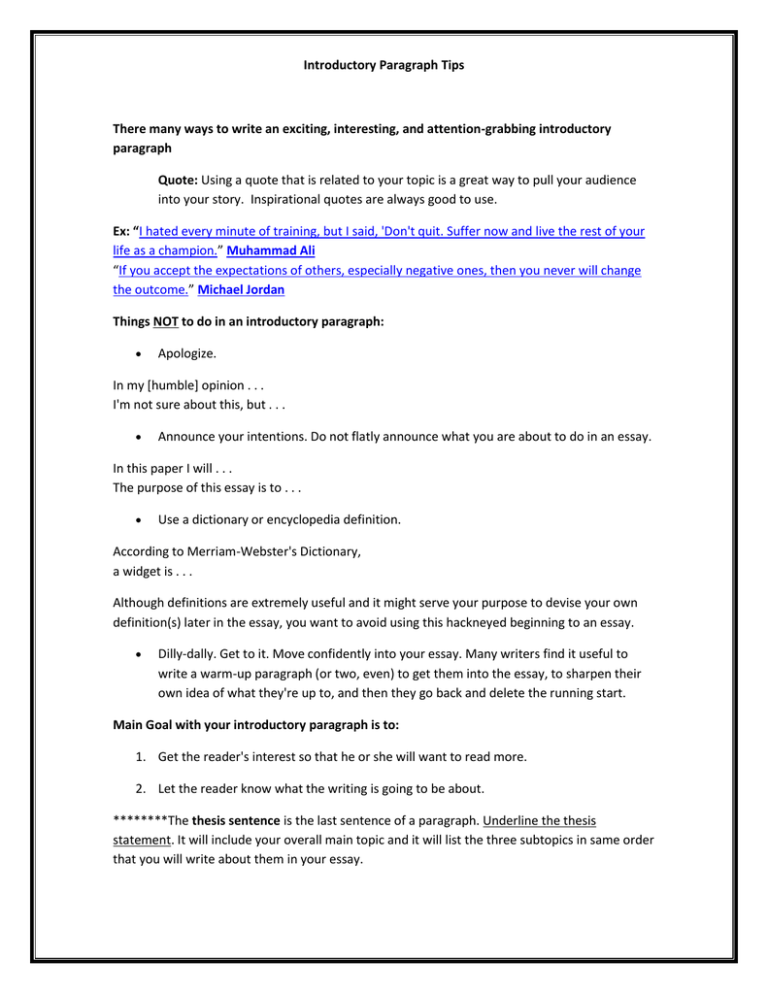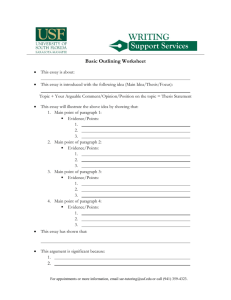Introductory Paragraph Tips There many ways to write an exciting
advertisement

Introductory Paragraph Tips There many ways to write an exciting, interesting, and attention-grabbing introductory paragraph Quote: Using a quote that is related to your topic is a great way to pull your audience into your story. Inspirational quotes are always good to use. Ex: “I hated every minute of training, but I said, 'Don't quit. Suffer now and live the rest of your life as a champion.” Muhammad Ali “If you accept the expectations of others, especially negative ones, then you never will change the outcome.” Michael Jordan Things NOT to do in an introductory paragraph: Apologize. In my [humble] opinion . . . I'm not sure about this, but . . . Announce your intentions. Do not flatly announce what you are about to do in an essay. In this paper I will . . . The purpose of this essay is to . . . Use a dictionary or encyclopedia definition. According to Merriam-Webster's Dictionary, a widget is . . . Although definitions are extremely useful and it might serve your purpose to devise your own definition(s) later in the essay, you want to avoid using this hackneyed beginning to an essay. Dilly-dally. Get to it. Move confidently into your essay. Many writers find it useful to write a warm-up paragraph (or two, even) to get them into the essay, to sharpen their own idea of what they're up to, and then they go back and delete the running start. Main Goal with your introductory paragraph is to: 1. Get the reader's interest so that he or she will want to read more. 2. Let the reader know what the writing is going to be about. ********The thesis sentence is the last sentence of a paragraph. Underline the thesis statement. It will include your overall main topic and it will list the three subtopics in same order that you will write about them in your essay.




